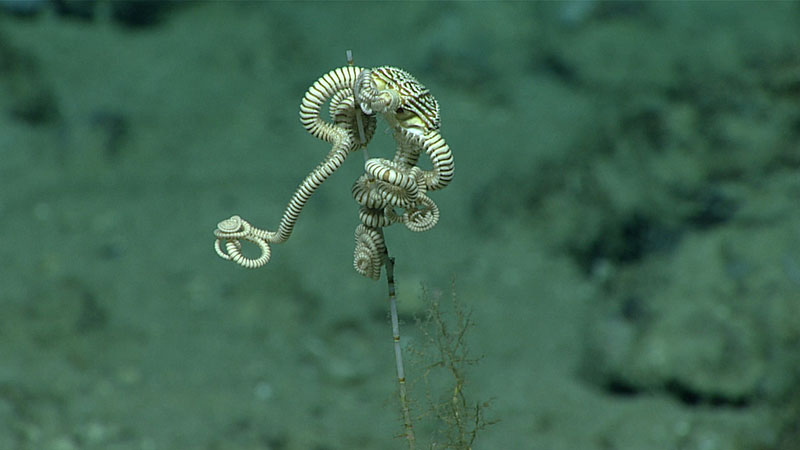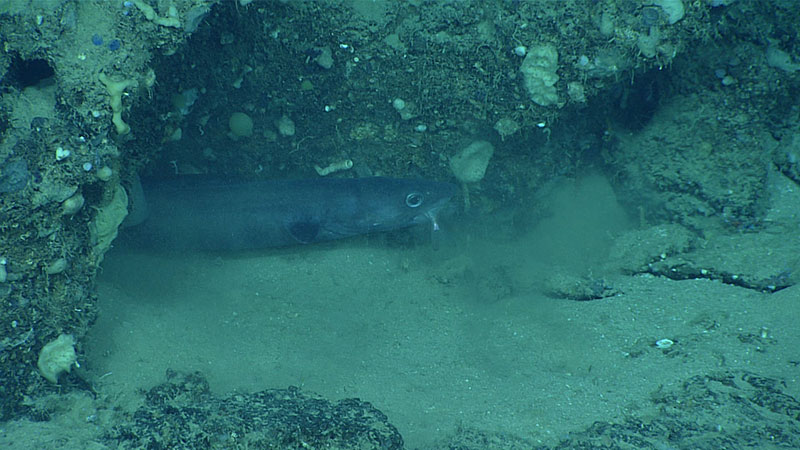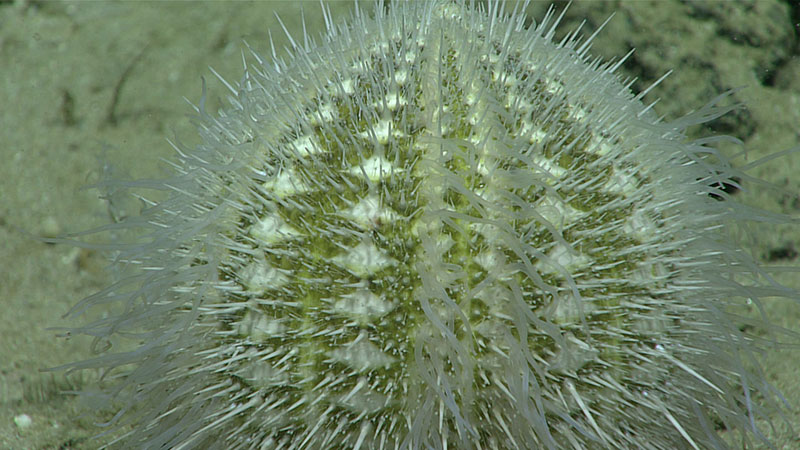-

A serpent star, Asteroporpa cf. annulata, clings to the skeleton of bamboo coral. Serpent stars, basket stars, and brittle stars all fall within the class Ophiuroidea. Image courtesy of the NOAA Office of Ocean Exploration and Research, Gulf of Mexico 2017. Download larger version (jpg, 638 KB).
-

This congrid eel was observed eating a smaller fish. During the dive, we saw nearly 15 different species of fish. Image courtesy of the NOAA Office of Ocean Exploration and Research, Gulf of Mexico 2017. Download larger version (jpg, 1.0 MB).
-

Beautiful Gracilechinus gracilis urchins are typically found on hard substrates in the Gulf of Mexico and northwestern Atlantic Ocean. Here you can see the tube feet are extended! Image courtesy of the NOAA Office of Ocean Exploration and Research, Gulf of Mexico 2017. Download larger version (jpg, 915 KB).